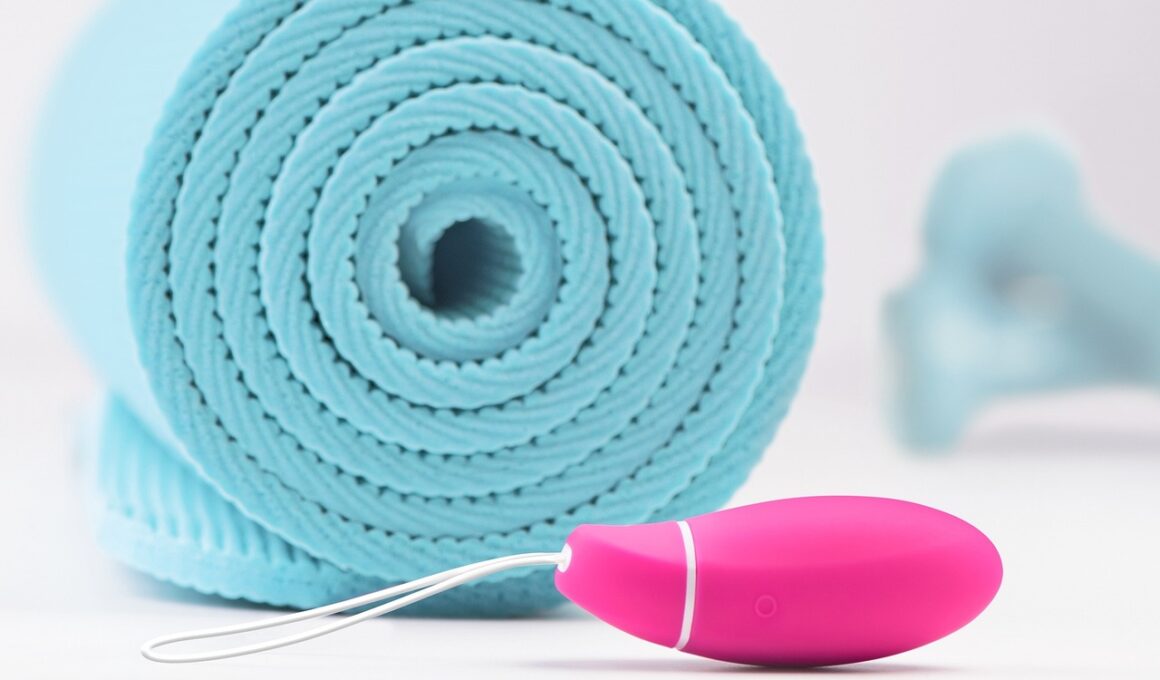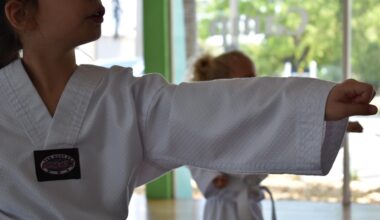Strengthening Pelvic Floor Muscles: The Key to Postpartum Fitness
Postpartum fitness plays a vital role in a woman’s recovery after childbirth. One of the most important aspects of this fitness program involves strengthening the pelvic floor muscles. These muscles support the uterus, bladder, and intestines, and their strength significantly impacts women’s health post-delivery. Kegel exercises are specifically designed to enhance pelvic floor strength and functionality. This exercise method is simple; it can be done anywhere, making it extremely accessible for new mothers. By engaging in this type of workout, women can combat issues like incontinence often experienced after childbirth. Consistency in performing these exercises can lead to improved control over pelvic floor muscles, therefore enhancing stability and personal comfort. The benefits of Kegel exercises extend beyond just physical strength; many report feeling a boost in confidence as they gain control over their bodies again. Furthermore, these exercises can also lead to more satisfying intimate experiences. It is crucial for women to integrate Kegel exercises into their postpartum fitness routines for holistic recovery. Regular practice of Kegels not only promotes overall health but also supports emotional well-being by fostering body positivity and empowerment.
Understanding Kegel exercises is essential for postpartum recovery. They entail contracting and relaxing the pelvic floor muscles, similar to stopping urination. However, it is vital to isolate these muscles to prevent engagement of other areas like the abdomen and buttocks. This is where many women struggle; they may not know if they’re doing them correctly. To make this easier, finding the right muscles can be done by inserting a finger into the vagina while contracting. Squeezing around the finger can help identify the correct muscles. Once these are located, practice is key, aiming for sets of 10-15 repetitions throughout the day. Performing these exercises at regular intervals can yield fantastic results over time. Interestingly, these exercises can also aid in the recovery of the perineum after childbirth. Health practitioners often recommend using Kegels as part of a comprehensive postpartum care plan. As with any exercise routine, gradually increasing the intensity and duration is crucial. Women should also remain mindful of their bodies and not push themselves if they experience discomfort. A careful approach to Kegels can lead to noticeable improvements in pelvic floor strength.
Benefits of Kegel Exercises
The advantages of incorporating Kegel exercises into postpartum fitness are manifold, offering both physical and emotional benefits. Firstly, one significant benefit is improved bladder control. Many women suffer from urinary incontinence post-birth, and regular practice of Kegels can dramatically reduce this issue. Strengthening these muscles helps them regain their prior functionality, promoting confidence in social situations. Secondly, Kegel exercises can improve sexual health and pleasure, leading to enhanced intimacy between partners. As pelvic floor muscles strengthen, blood flow to the area increases, which can also heighten sensitivity. Thirdly, stronger pelvic floor muscles help prevent pelvic organ prolapse, a condition that can occur when pelvic organs descend due to weakened support. Engaging in Kegel exercises regularly can significantly reduce the risk of such complications. Furthermore, many new mothers report feeling empowered as they actively engage in their own recovery. With improved body awareness and control, women may feel a stronger connection to their bodies post-baby. Overall, Kegel exercises serve as a small yet powerful tool in enhancing a woman’s physical and emotional health following childbirth.
Incorporating Kegel exercises into daily routines can be easy and effective. They can be performed discreetly at home, work, or even while out running errands. This versatility makes it easier for mothers to commit to a regular regimen without feeling overwhelmed by time constraints. Many women find it helpful to tie their Kegel practice to daily activities. For example, doing them while breastfeeding or during diaper changes can create a routine that feels natural and manageable. Setting reminders on smartphones or utilizing Kegel counting apps can also assist in maintaining consistency. Additionally, women should remember to breathe normally while performing the exercises; holding the breath can lead to unnecessary tension. Trying different positions can also be beneficial to target the pelvic muscles in various ways. Many women find lying down or sitting on a stability ball enhances their comfort while performing Kegels. Overall, finding a method that works within individual lifestyles is critical for fostering long-term success. The focus should be on making Kegel exercises an enjoyable part of daily life to ensure adherence and maximize the health benefits that follow.
Common Mistakes to Avoid
While practicing Kegel exercises can be beneficial, women must be aware of common mistakes that can hinder their effectiveness. One common mistake is not fully relaxing the pelvic floor muscles between contractions. It’s crucial to allow these muscles to rest before the next contraction to promote overall strength. Another mistake involves holding one’s breath. Many women subconsciously tighten their abdominal or other muscles, which can detract from the benefits of the exercises. Instead, staying relaxed throughout the process is essential. Additionally, performing these exercises too vigorously can lead to strain. Quality over quantity is critical when practicing Kegels. Instead of focusing on how many repetitions can be done, it’s more important to ensure that each contraction is strong and controlled. Seeking guidance from a healthcare provider or pelvic floor therapist can also be invaluable for personalized instruction and feedback. This will help to avoid developing poor habits that may limit the potential benefits. Lastly, setting realistic expectations is critical; strength builds over time, so patience is necessary during this journey.
As with any aspect of postpartum recovery, women should consult with their healthcare providers before starting to perform Kegel exercises. Every woman’s body is different, and it’s best to ensure that the pelvic floor is ready for such workouts after delivery. In particular, women who have undergone surgical deliveries or experienced significant trauma during birth should receive guidance. Depending on individual circumstances, healthcare providers can recommend the right time to begin these exercises and provide modifications as necessary. Seeking out pelvic floor therapists can also be beneficial; these specialized practitioners can provide tailored programs based on individual needs and conditions. Keeping an open dialogue with healthcare providers about any discomfort or issues that arise during Kegel performance is vital for ongoing safety and effectiveness. Online resources and support groups can also promote a sense of community among new mothers embarking on their fitness journeys. These platforms offer not only motivation but also valuable tips and experiences from others facing similar challenges. Continually adapting methods and staying informed can help in achieving the desired benefits while engaging in postpartum fitness.
Conclusion
In conclusion, Kegel exercises offer essential benefits for postpartum fitness, fostering both physical and emotional improvements. These simple exercises can help women regain bladder control, enhance sexual health, and reduce the risk of pelvic organ prolapse. Incorporating Kegels into daily routines helps cultivate a sense of control and awareness that many mothers find empowering. With persistent practice, women can notice the improvements in muscle strength, leading to enhanced comfort and confidence. Avoiding common mistakes and consulting healthcare professionals ensures that the execution of these exercises is effective and safe. It’s important to remember that everybody’s postpartum recovery journeys are unique, and Kegels should be customized according to personal experiences. Thus, Kegel exercises are an invaluable tool in the comprehensive approach to postpartum recovery. By prioritizing pelvic floor health, women can pave the way towards improved overall well-being. As mothers embrace their post-baby bodies, focusing on fitness can also positively influence emotional aspects of recovery. Therefore, Kegel exercises should become an integral part of any postpartum fitness strategy, allowing women to thrive physically and emotionally following childbirth.
In summary, Kegels provide numerous benefits and can be tailored to fit individual preferences. Finding a routine that works ensures long-term success. Women can manage their postpartum recovery more efficiently, leading to a happier, healthier experience. Investing time in this simple yet effective exercise will pay dividends, promoting physical wellness. With strong pelvic floor muscles, women can navigate the postpartum phase with greater confidence.


